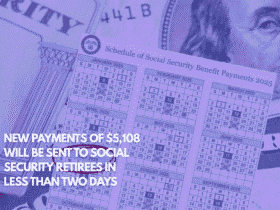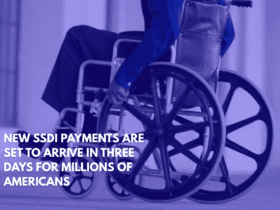If you were born between 1960 and 1970, you’re now eligible to claim Social Security retirement benefits starting at age 62. But claiming early means you’ll get smaller monthly payments for the rest of your life. The Social Security Administration (SSA) has set the Full Retirement Age (FRA) at 67 for this group, and starting earlier comes with a cost.
Claiming at 62 vs Waiting Until 67 or 70
The earliest age you can begin receiving Social Security is 62. But if you claim your benefits before your FRA of 67, your monthly amount will be permanently reduced. For example, if your full benefit is $2,000 at 67, claiming at 62 cuts it by 30%—you’ll get only $1,400 each month.
If you wait until 70, your monthly benefit increases by 8% each year after your FRA. So instead of $2,000 at 67, you could receive $2,480 at 70. This increase is permanent, but you’ll need to wait three more years without payments.
Here’s a quick comparison:
- At 62: $1,400/month (30% reduction)
- At 65: $1,734/month (13.3% reduction)
- At 67 (FRA): $2,000/month (full amount)
- At 70: $2,480/month (24% increase)
Choosing when to claim depends on your financial situation, health, and future plans.
How Your Benefit Is Calculated
Your Social Security benefit is based on your highest 35 years of earnings, adjusted for inflation. If you worked fewer than 35 years, the SSA fills the missing years with $0, which can lower your benefit.
Only reported income counts. So, cash jobs or work not declared on tax returns won’t help. Self-employed people must pay the full 12.4% Social Security tax to get full credit for their income.
In 2025, you’ll need 40 work credits (about 10 years of work) to qualify for retirement benefits. One credit is earned for every $1,810 you make, up to 4 credits per year.

What Are the Average and Maximum Benefits in 2025?
In 2025, the average monthly Social Security payment is $1,976. This includes a 2.5% cost-of-living adjustment (COLA) added at the start of the year. But rising inflation may reduce the real value of that increase.
The maximum monthly benefit is $4,018 if you claim at 67. But to get that, you must have earned at or above the maximum taxable income ($176,100 in 2025) for at least 35 years.
Most retirees get somewhere between $1,000 and $3,800 per month depending on their earnings history.
Can You Work After FRA?
Yes. Once you reach your full retirement age (67), you can work without any limit on your earnings—and your Social Security payments won’t be reduced. If you earn more than in past years, the SSA may even increase your monthly benefit by updating your earnings record.
What If You Wait Until 70?
If you delay claiming until age 70, your monthly check increases by 8% for each year after your FRA. So someone entitled to $2,000 at 67 would get $2,480 at 70. This is a permanent increase and could be a smart move if you expect to live a long life and don’t urgently need the money.
Consider Your Situation
People born between 1960 and 1970 often have higher incomes than earlier generations, but also may have gaps in work due to layoffs or informal jobs. These factors affect your benefit amount.
Even though the SSA tries to make benefits fair, your payment will only reflect what’s on record. So make sure your earnings are officially reported and your taxes are paid.











Leave a Reply